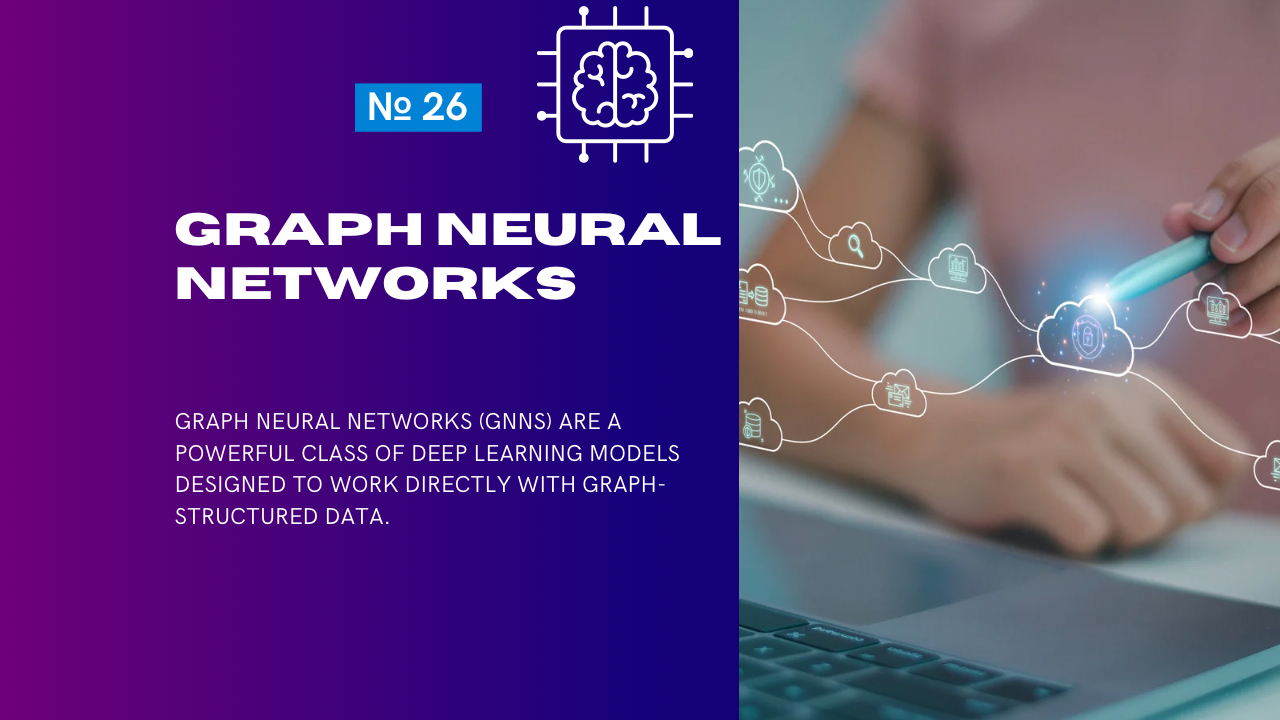Graph Neural Networks (GNNs) are a powerful class of deep learning models designed to work directly with graph-structured data. By leveraging the relationships between nodes and edges, GNNs excel in tasks requiring relational reasoning and complex data interdependencies. This guide explores key applications of GNNs in bioinformatics, logistics, and social networks, demonstrating their versatility and impact.
1. Bioinformatics
In bioinformatics, data often comes in graph form, such as molecular structures, protein interactions, and genetic networks. GNNs are well-suited for extracting insights from these datasets.
Applications
| Task | Description | Example Use Cases |
|---|---|---|
| Drug Discovery | Predict molecular properties or interactions between drugs and targets. | Identifying potential drug candidates. |
| Protein Structure Prediction | Model the interactions between amino acids as a graph. | AlphaFold-style protein folding predictions. |
| Gene Regulatory Networks | Model gene interactions to understand regulatory mechanisms. | Identifying key genes in diseases. |
| Disease Classification | Use graph representations of patient data for diagnosis or treatment planning. | Cancer subtype classification based on genetic mutations. |
Example: Molecular Property Prediction
Molecules can be represented as graphs, where:
- Nodes: Atoms.
- Edges: Bonds between atoms.
GNNs like Graph Convolutional Networks (GCNs) and Message Passing Neural Networks (MPNNs) predict properties such as toxicity, solubility, or binding affinity.
# Example: Using PyTorch Geometric for molecular graphs
from torch_geometric.nn import GCNConv
import torch
class GNNForMolecules(torch.nn.Module):
def __init__(self, in_channels, hidden_channels, out_channels):
super(GNNForMolecules, self).__init__()
self.conv1 = GCNConv(in_channels, hidden_channels)
self.conv2 = GCNConv(hidden_channels, out_channels)
def forward(self, x, edge_index):
x = self.conv1(x, edge_index).relu()
x = self.conv2(x, edge_index)
return x
# Graph: Nodes (atoms) and edges (bonds)
x = torch.randn((10, 16)) # 10 atoms, 16 features each
edge_index = torch.tensor([[0, 1, 2], [1, 2, 0]]) # Bond connections
model = GNNForMolecules(in_channels=16, hidden_channels=32, out_channels=1)
output = model(x, edge_index)2. Logistics
In logistics and supply chain management, graphs are natural representations of networks like transportation routes, warehouses, and delivery hubs.
Applications
| Task | Description | Example Use Cases |
|---|---|---|
| Route Optimization | Find the most efficient paths through transportation networks. | Optimizing delivery routes for e-commerce companies. |
| Demand Forecasting | Predict demand across interconnected warehouses or regions. | Inventory planning in supply chains. |
| Supply Chain Resilience | Analyze and optimize supply chain networks to identify bottlenecks or vulnerabilities. | Identifying critical nodes in global trade networks. |
| Vehicle Routing Problems (VRP) | Solve VRPs where vehicles serve multiple customers efficiently. | Planning for ride-sharing platforms or delivery fleets. |
Example: Route Optimization
For a delivery network:
- Nodes: Cities, warehouses, or delivery points.
- Edges: Roads or transportation routes with weights (e.g., distances, travel times).
GNNs like Graph Attention Networks (GATs) can assign attention scores to prioritize certain routes based on conditions like traffic or cost.
from torch_geometric.nn import GATConv
class GNNForRouting(torch.nn.Module):
def __init__(self, in_channels, hidden_channels, out_channels):
super(GNNForRouting, self).__init__()
self.gat1 = GATConv(in_channels, hidden_channels, heads=2)
self.gat2 = GATConv(hidden_channels * 2, out_channels)
def forward(self, x, edge_index):
x = self.gat1(x, edge_index).relu()
x = self.gat2(x, edge_index)
return x
# Example data: Traffic graph
x = torch.randn((20, 8)) # 20 nodes, 8 features each (e.g., traffic, cost)
edge_index = torch.randint(0, 20, (2, 50)) # Random connections
model = GNNForRouting(in_channels=8, hidden_channels=16, out_channels=1)
output = model(x, edge_index)3. Social Networks
Social networks are inherently graph-structured, making them a prime domain for GNNs. Nodes represent users, and edges capture interactions such as friendships, messages, or likes.
Applications
| Task | Description | Example Use Cases |
|---|---|---|
| Community Detection | Identify groups or clusters of similar users. | Detecting communities in social media platforms. |
| Recommendation Systems | Suggest content or connections based on user preferences and interactions. | Movie, product, or friend recommendations. |
| Fake News Detection | Model the spread of information through social graphs. | Identifying misinformation campaigns. |
| Influence Maximization | Identify key users who maximize the spread of information or content. | Viral marketing campaigns. |
Example: Recommendation Systems
For a recommendation system:
- Nodes: Users and items (e.g., movies, products).
- Edges: Interactions (e.g., ratings, clicks).
GNNs like GraphSAGE aggregate information from neighboring nodes to predict user preferences.
from torch_geometric.nn import SAGEConv
class GNNForRecommendations(torch.nn.Module):
def __init__(self, in_channels, hidden_channels, out_channels):
super(GNNForRecommendations, self).__init__()
self.conv1 = SAGEConv(in_channels, hidden_channels)
self.conv2 = SAGEConv(hidden_channels, out_channels)
def forward(self, x, edge_index):
x = self.conv1(x, edge_index).relu()
x = self.conv2(x, edge_index)
return x
# Example: User-item interaction graph
x = torch.randn((30, 10)) # 30 nodes (users + items), 10 features each
edge_index = torch.randint(0, 30, (2, 60)) # Random user-item interactions
model = GNNForRecommendations(in_channels=10, hidden_channels=32, out_channels=1)
output = model(x, edge_index)Comparison Across Domains
| Domain | Nodes | Edges | Example Models |
|---|---|---|---|
| Bioinformatics | Molecules, proteins, genes | Chemical bonds, interactions | GCNs, MPNNs |
| Logistics | Warehouses, cities, delivery hubs | Routes, traffic conditions | GATs, GraphSAGE |
| Social Networks | Users, content | Friendships, likes, messages | GraphSAGE, GATs |
Challenges in GNN Applications
- Scalability:
- GNNs can struggle with large graphs containing millions of nodes and edges.
- Solution: Use scalable models like GraphSAGE or sampling techniques.
- Data Quality:
- Poor-quality graph data (e.g., noisy edges) can degrade performance.
- Solution: Preprocess and clean graph data carefully.
- Model Interpretability:
- GNNs are often seen as black-box models.
- Solution: Use explainability techniques, such as attention weights in GATs.
Future Directions
- Dynamic Graphs:
- Develop GNNs that handle evolving graphs, such as social networks or traffic systems.
- Cross-Domain Applications:
- Combine bioinformatics, logistics, and social networks to create hybrid models.
- Pretrained GNNs:
- Extend the concept of transfer learning to GNNs with pretrained graph embeddings.
Conclusion
Graph Neural Networks have transformative applications in domains like bioinformatics, logistics, and social networks. By leveraging the inherent structure of graph data, GNNs enable powerful insights and predictions that are otherwise difficult to achieve with traditional methods.
